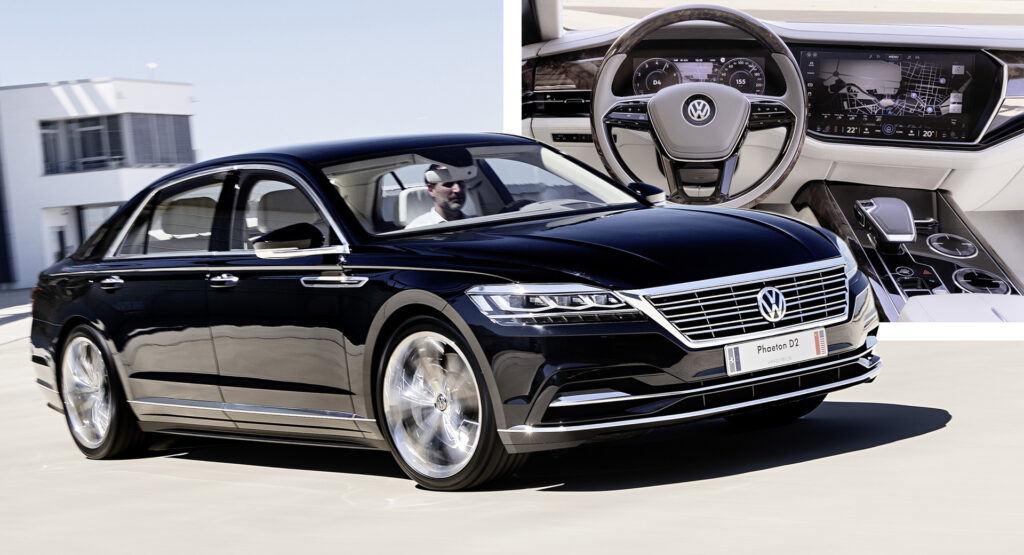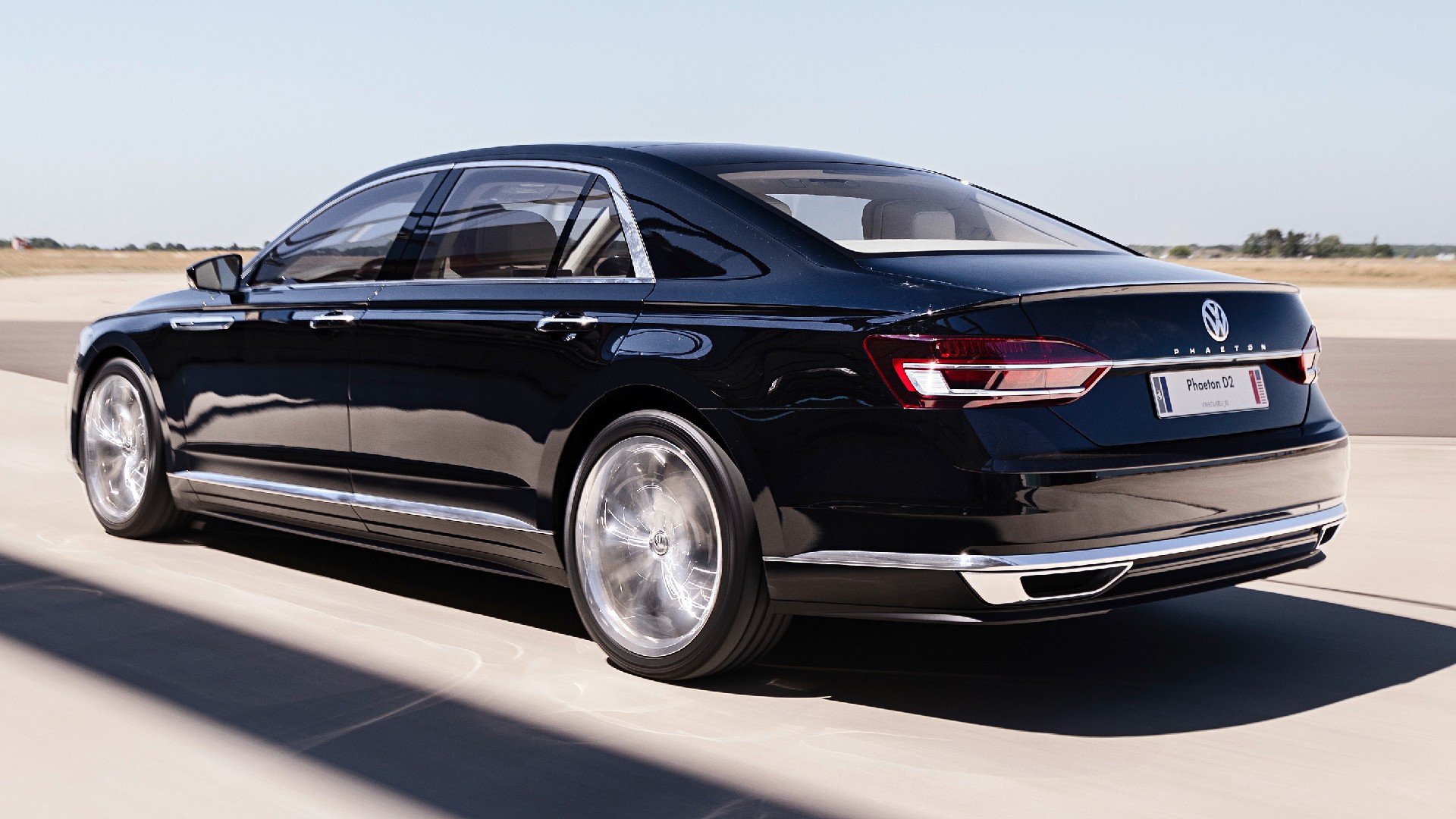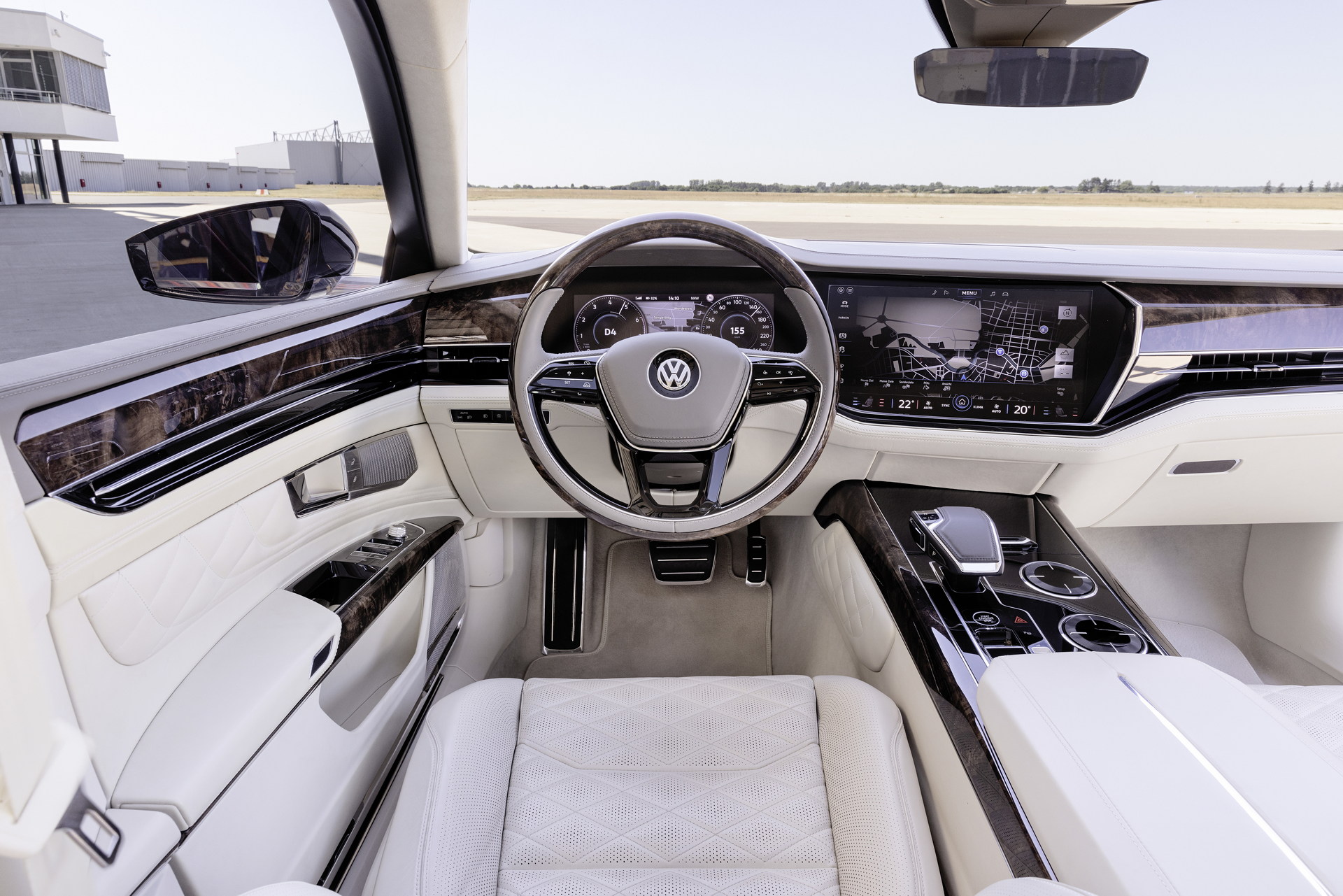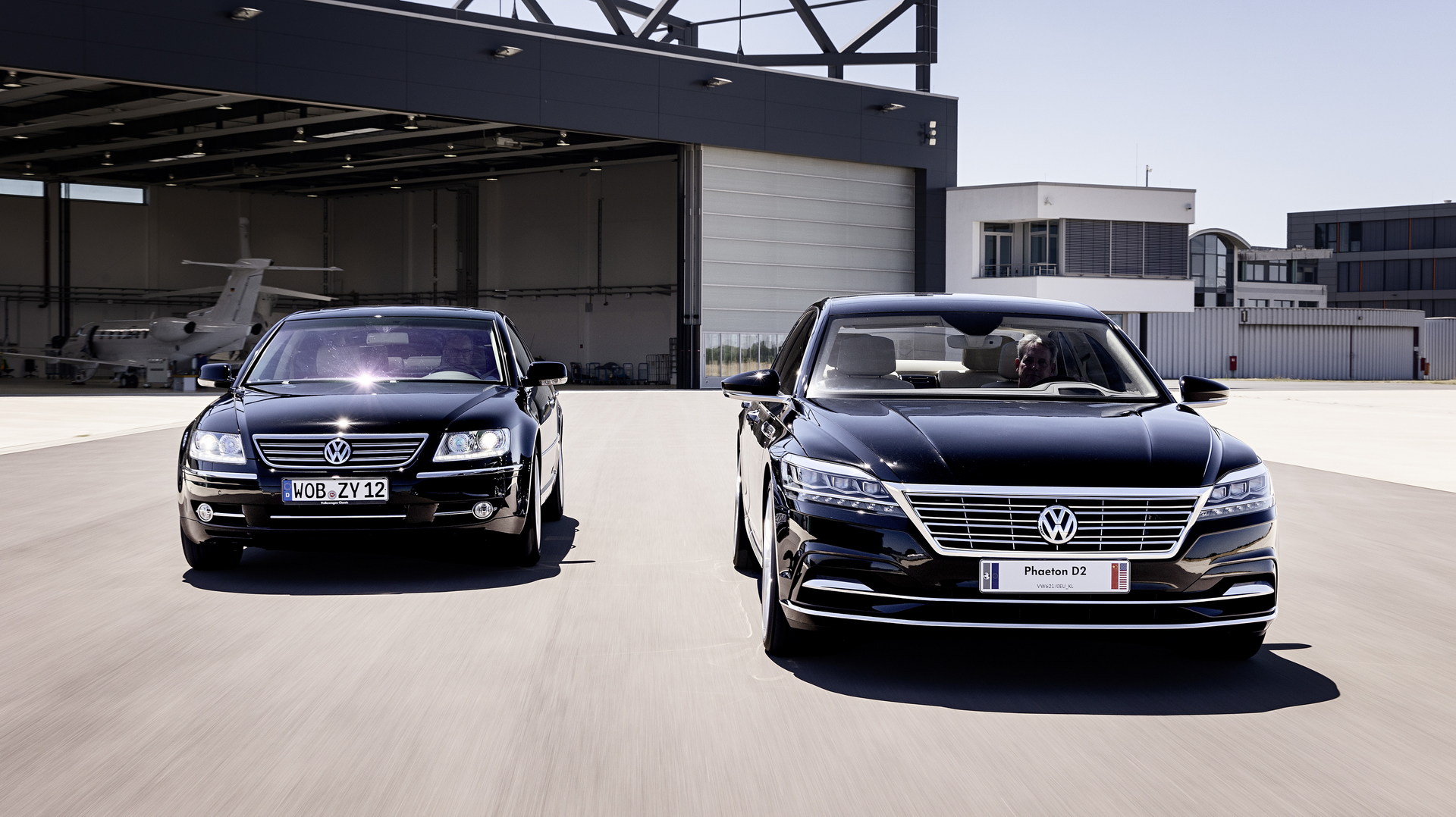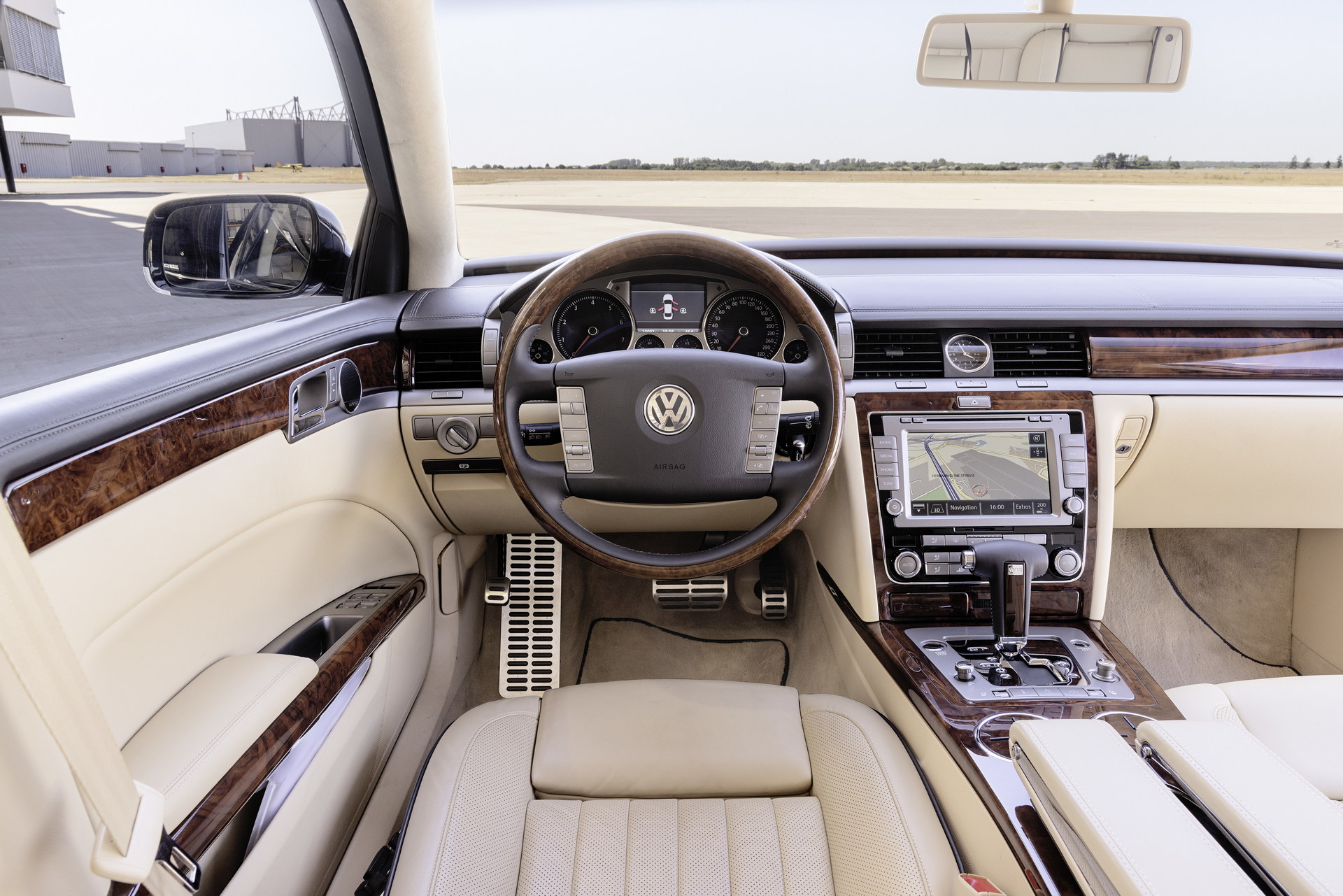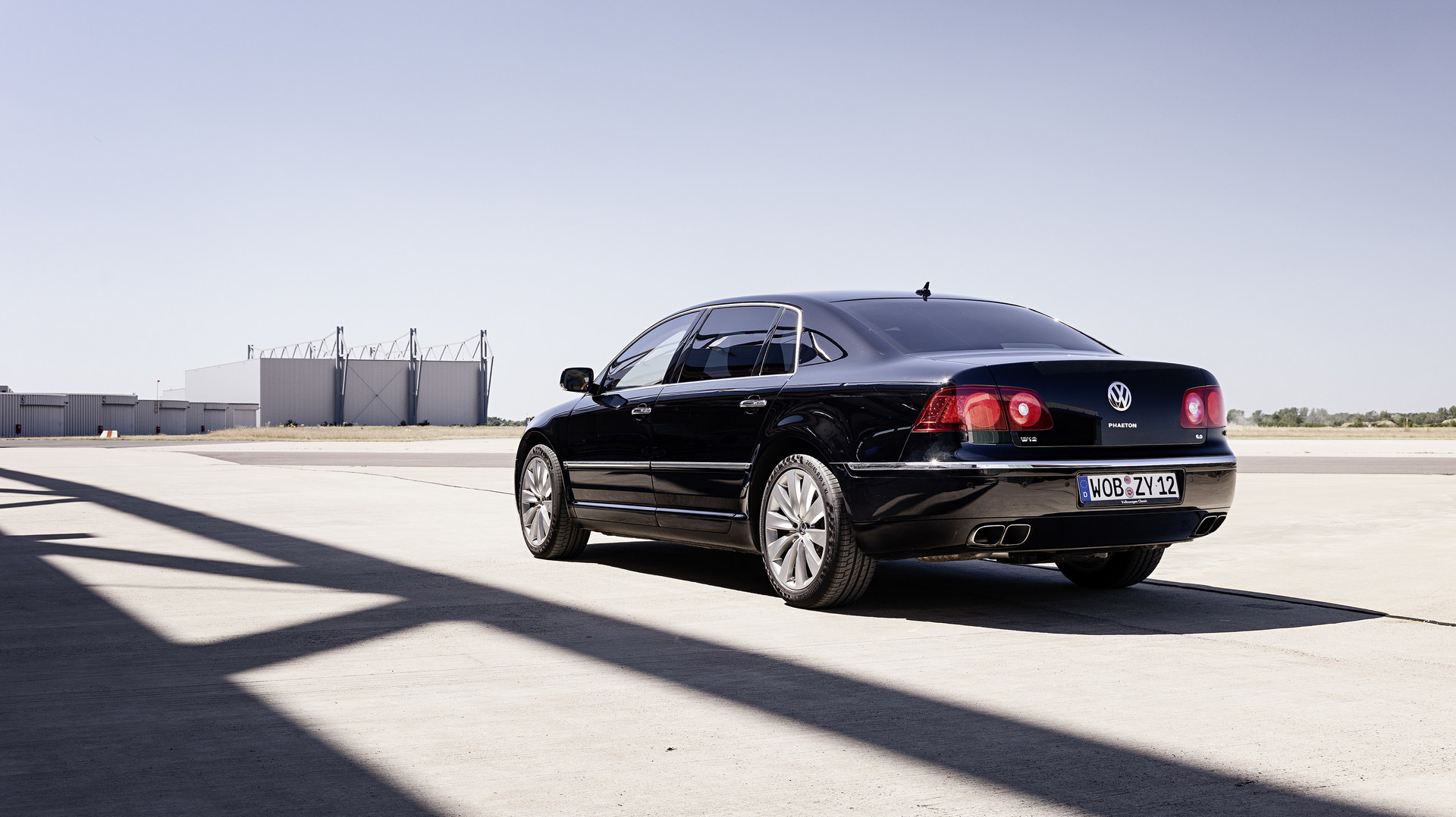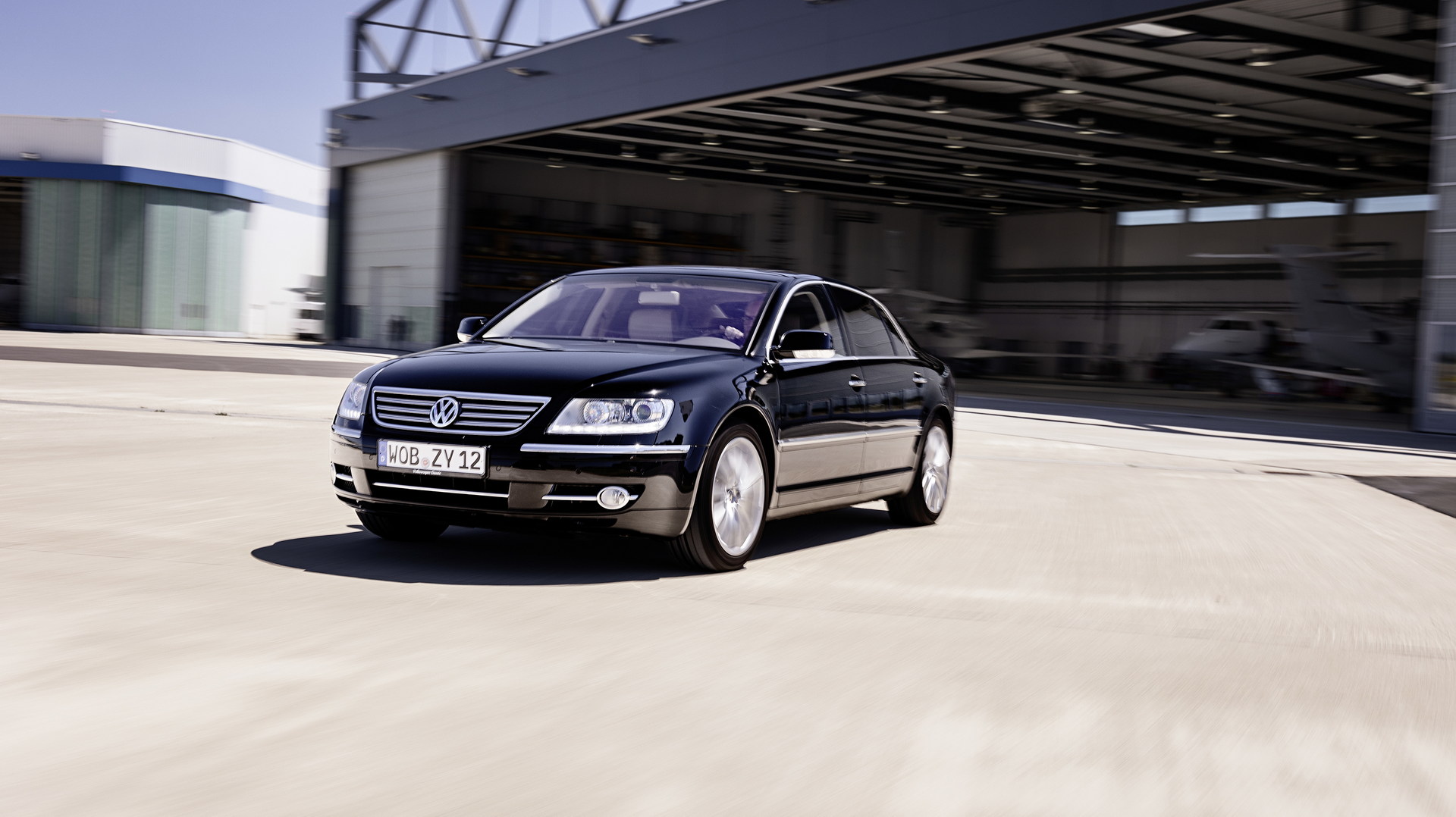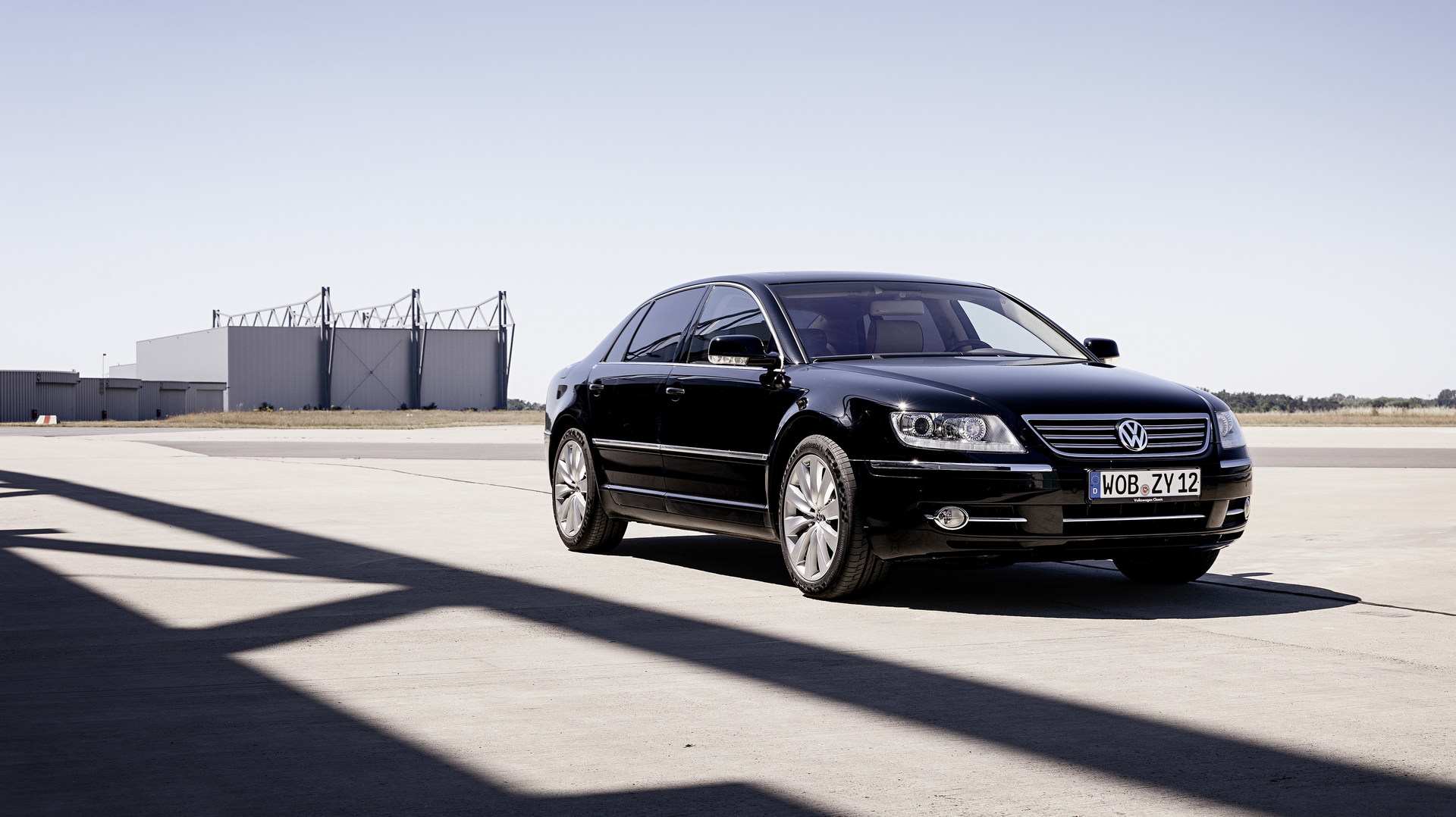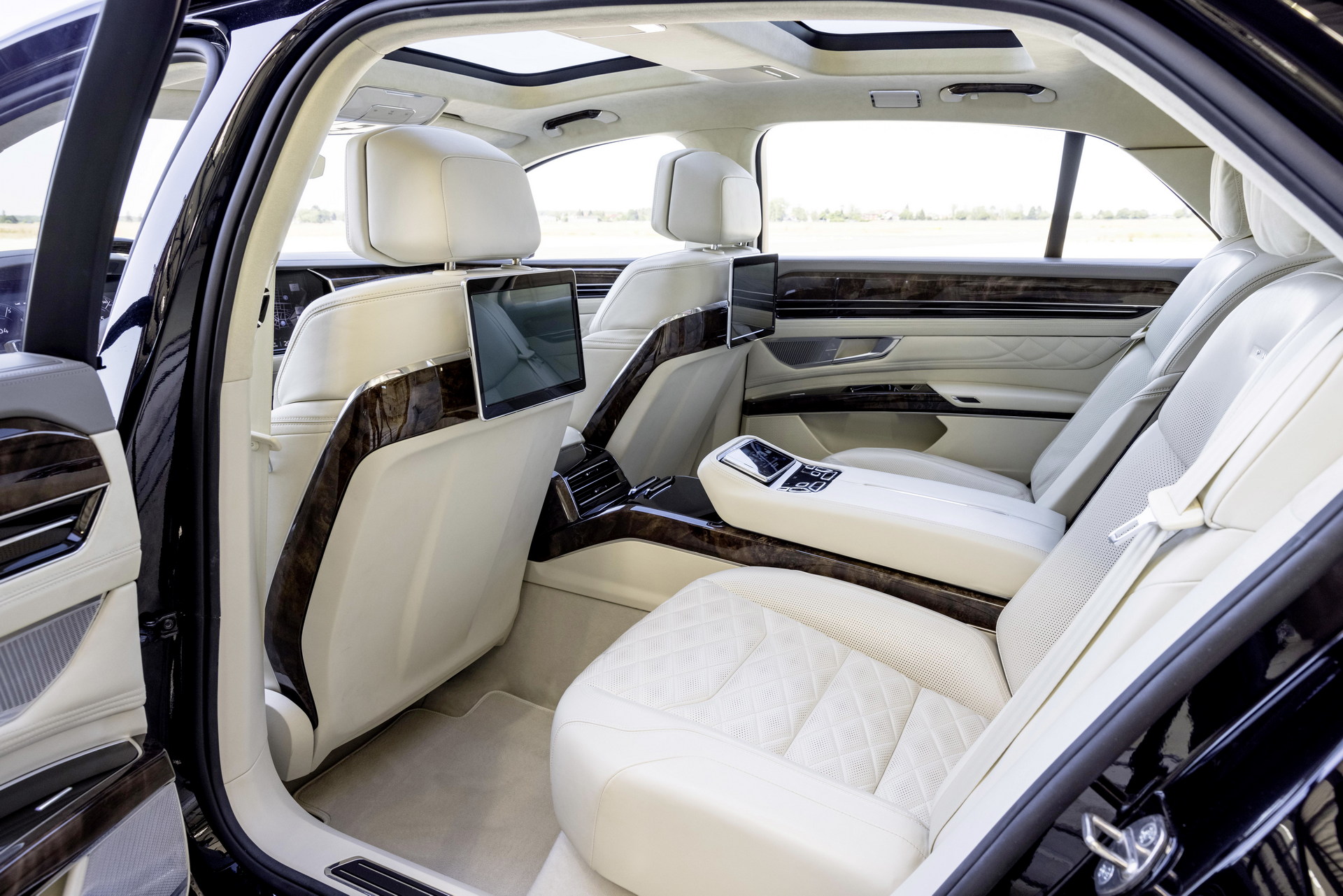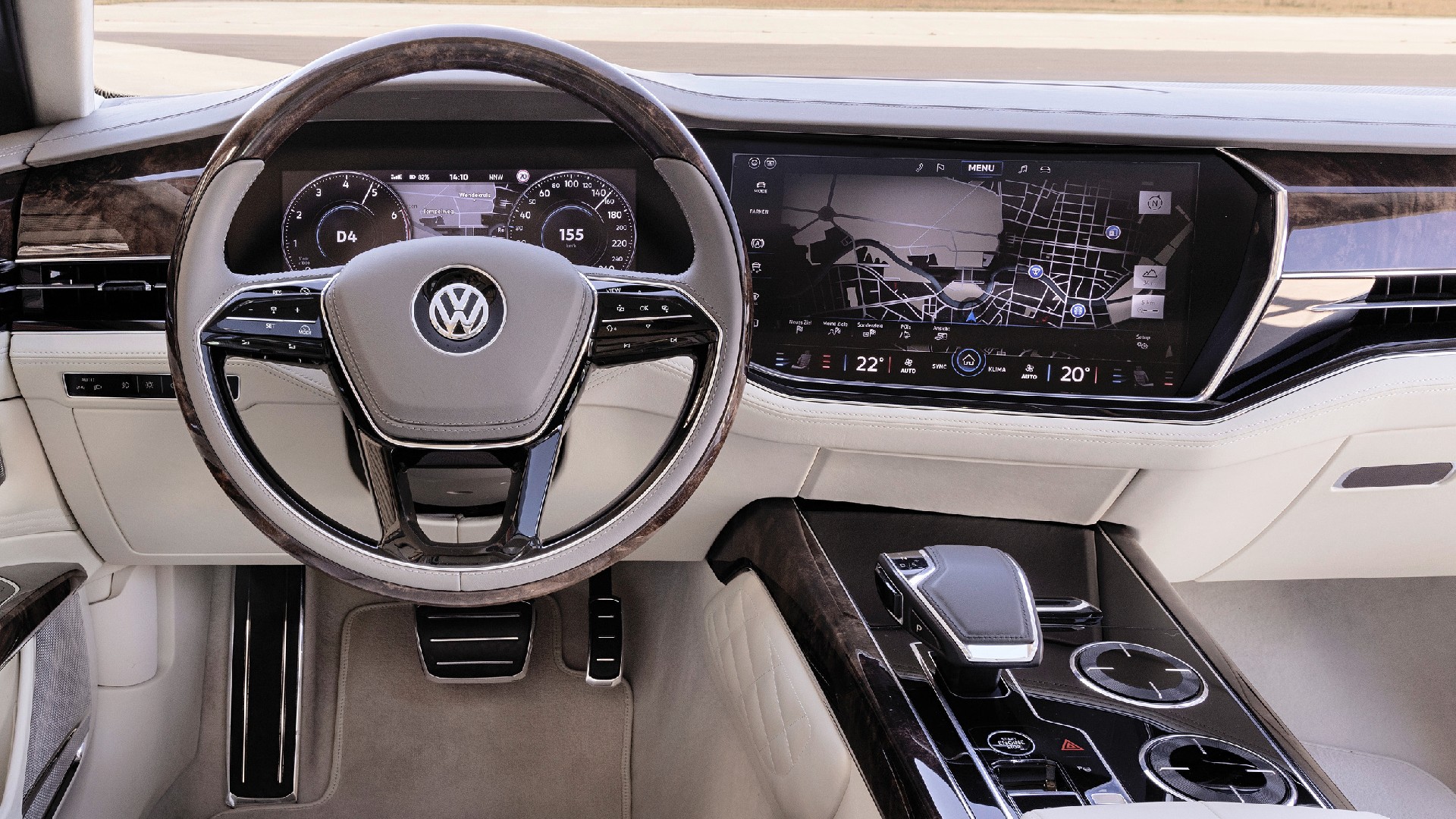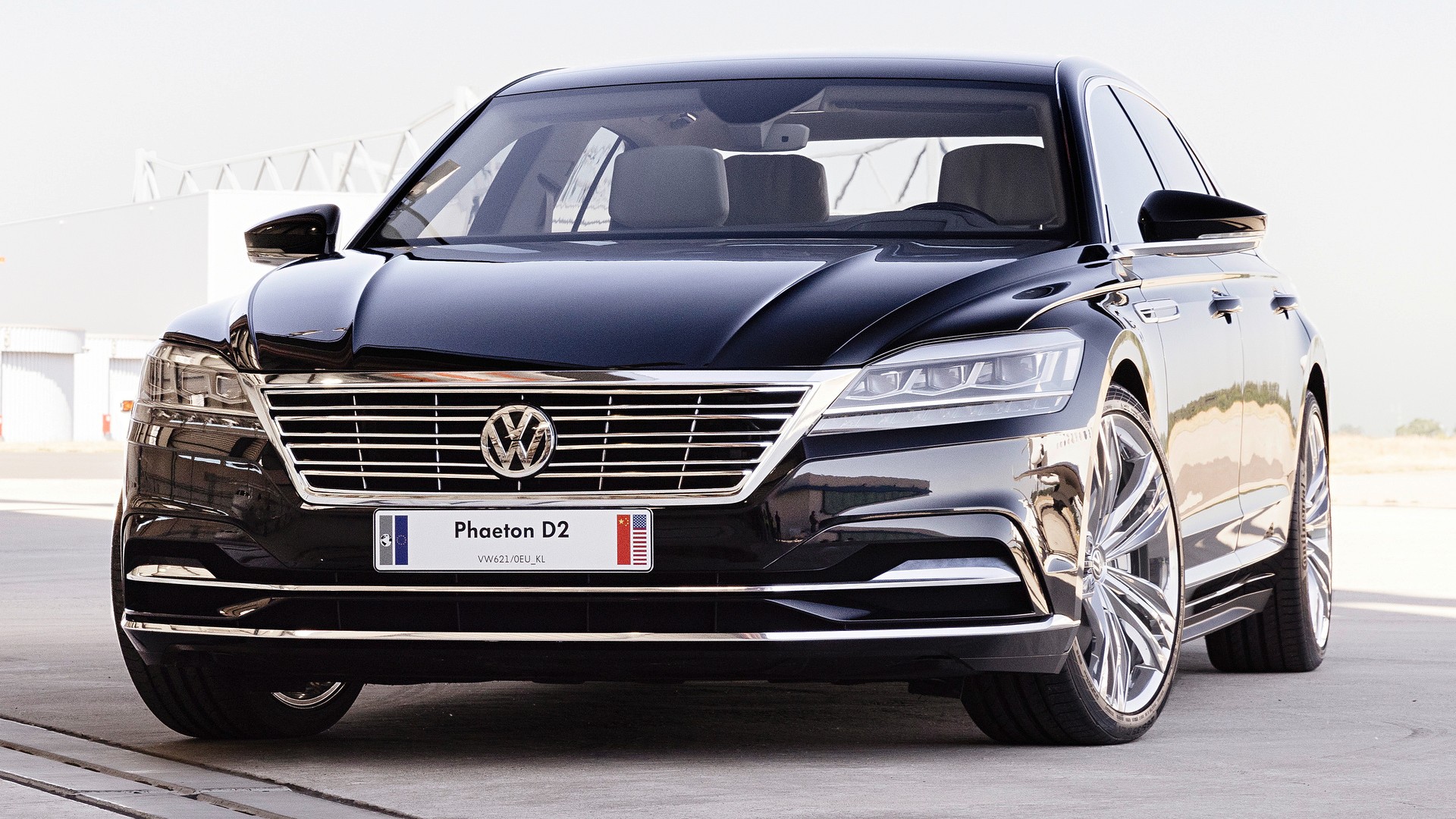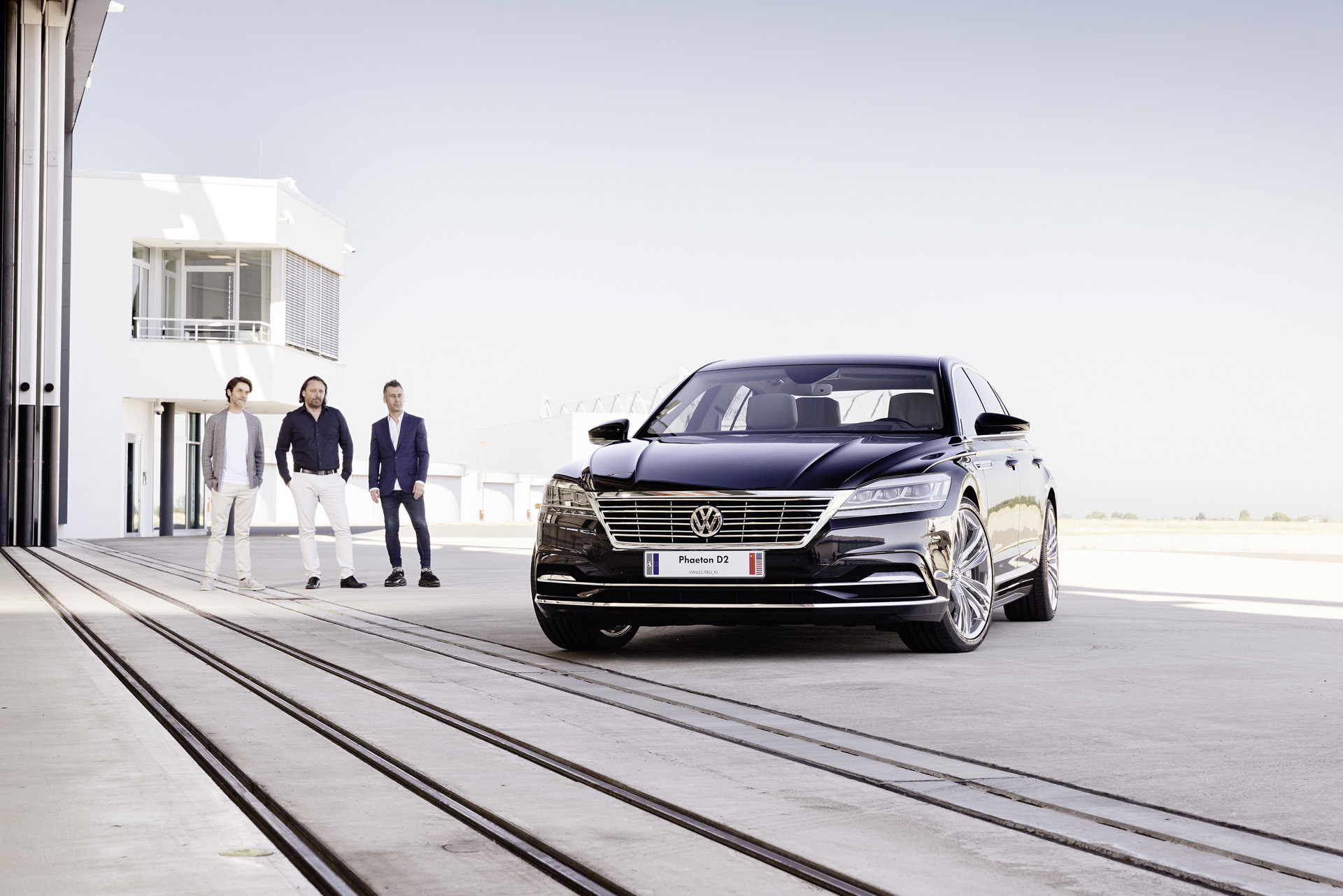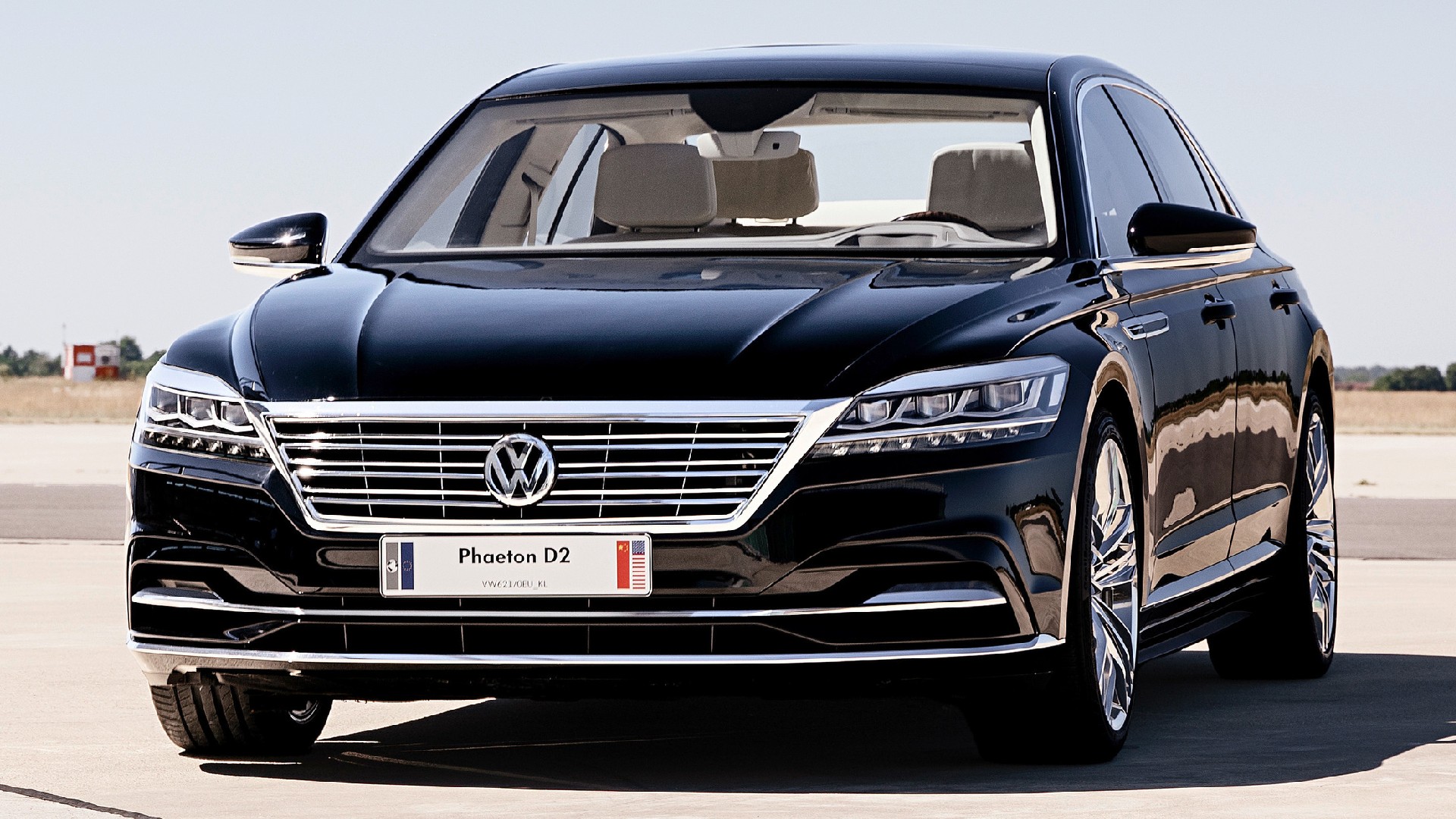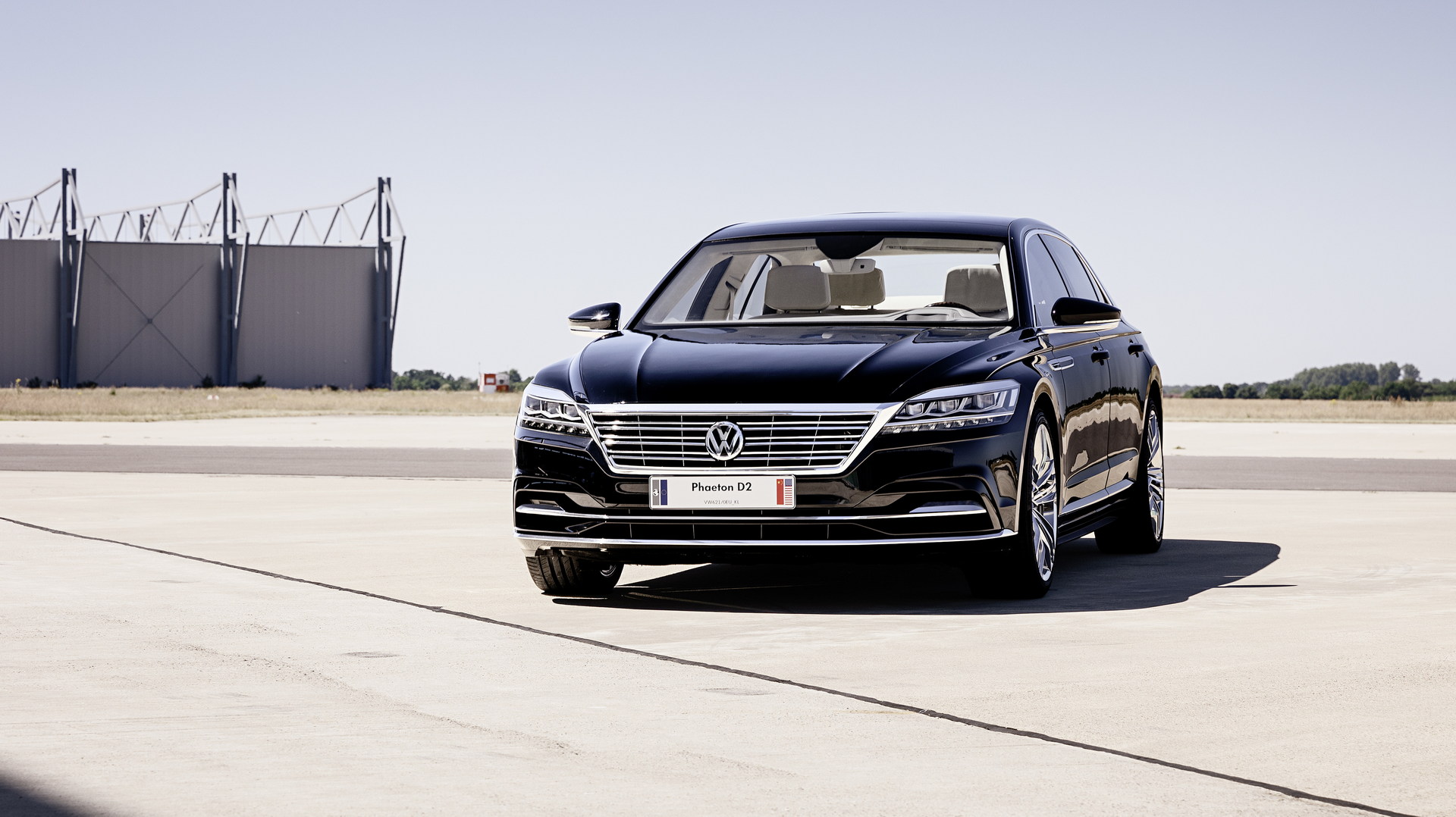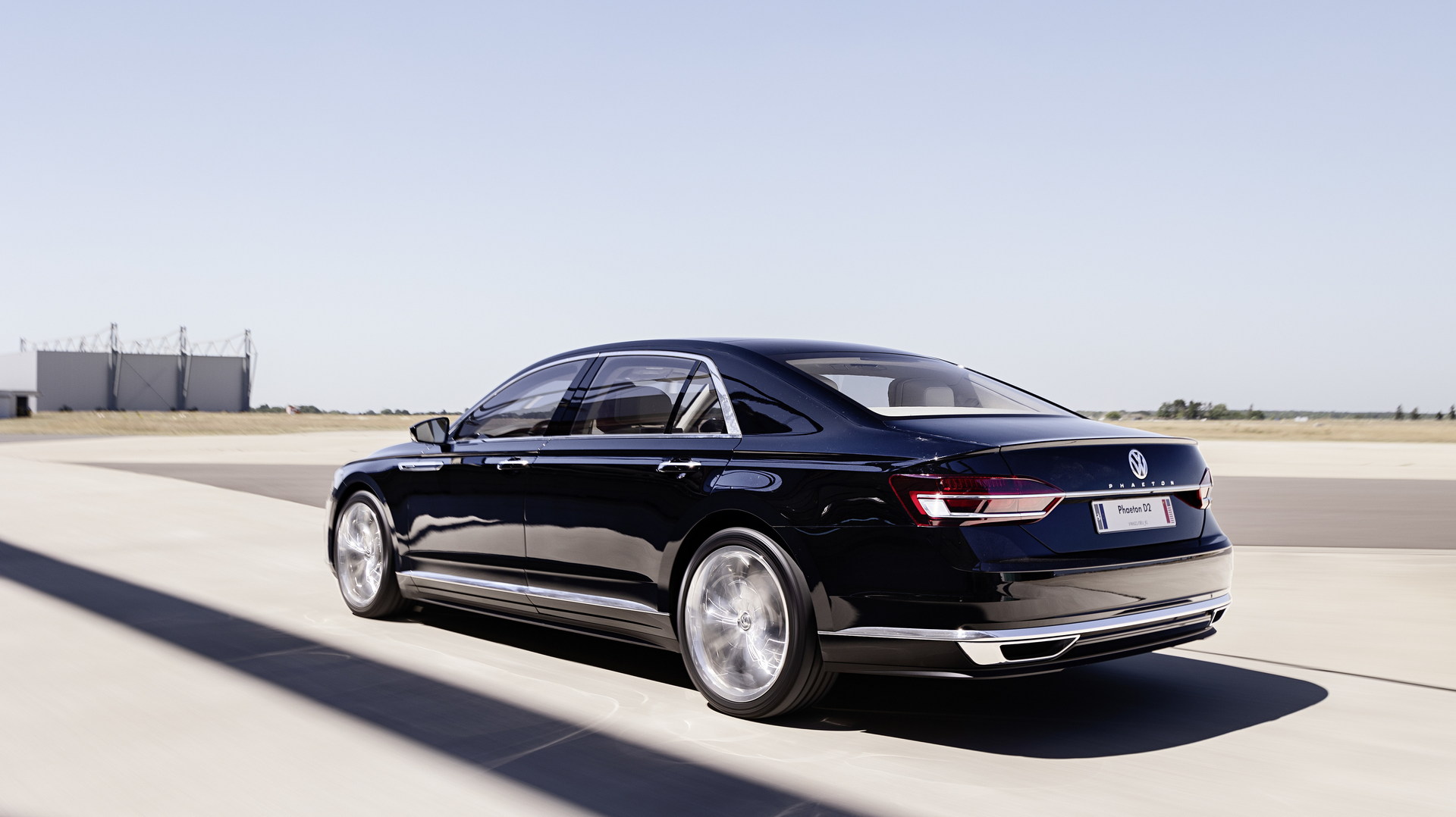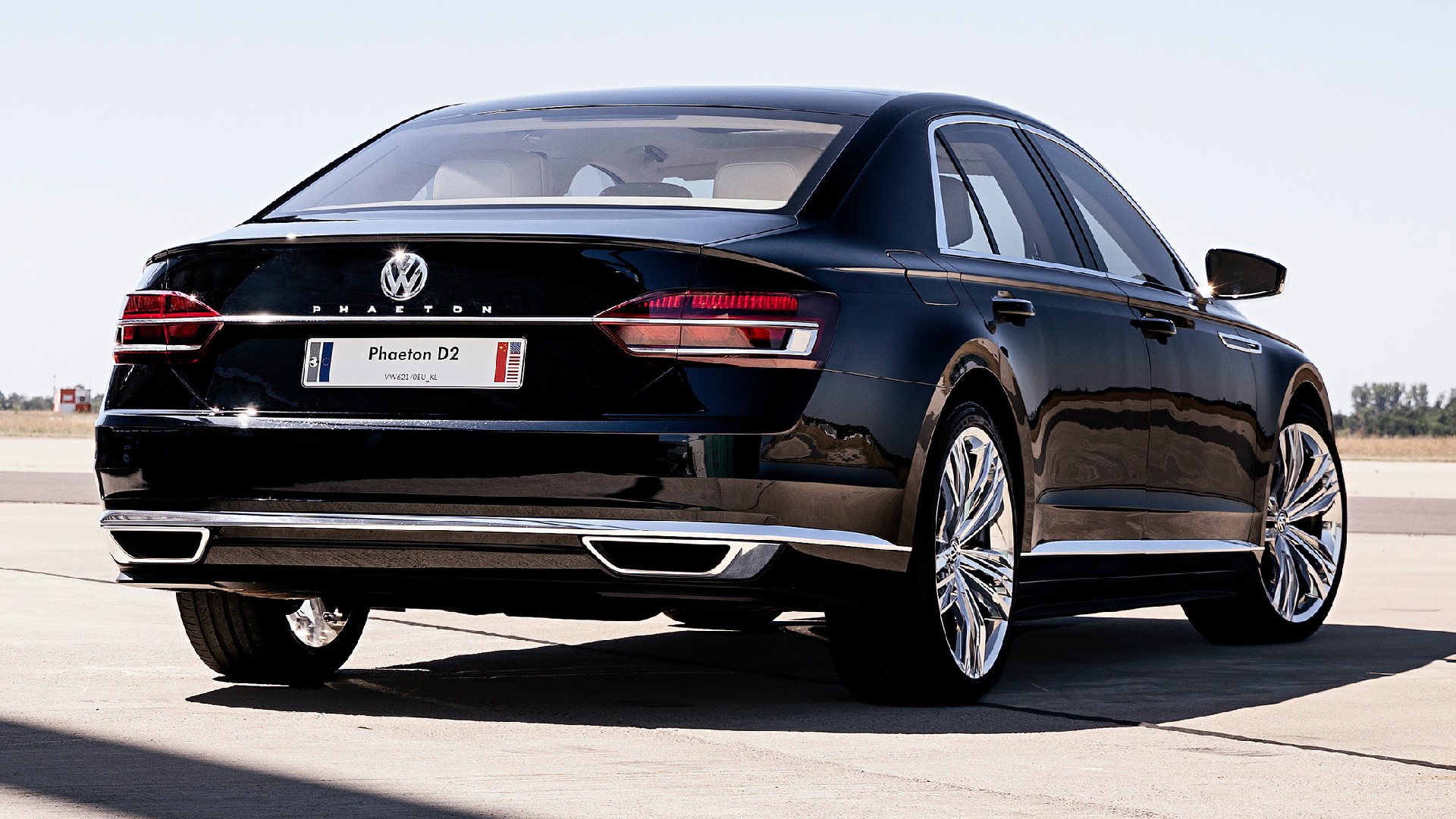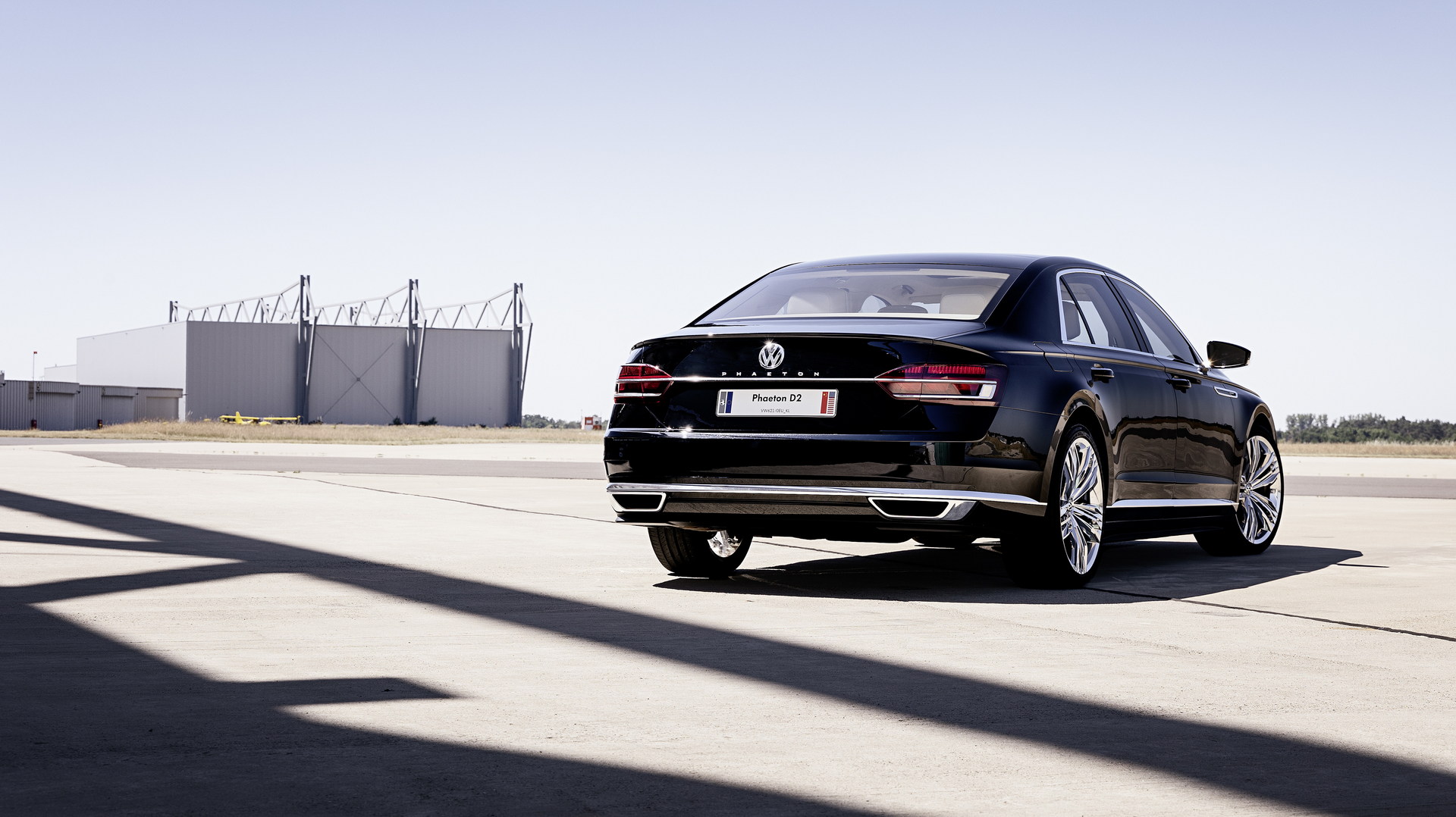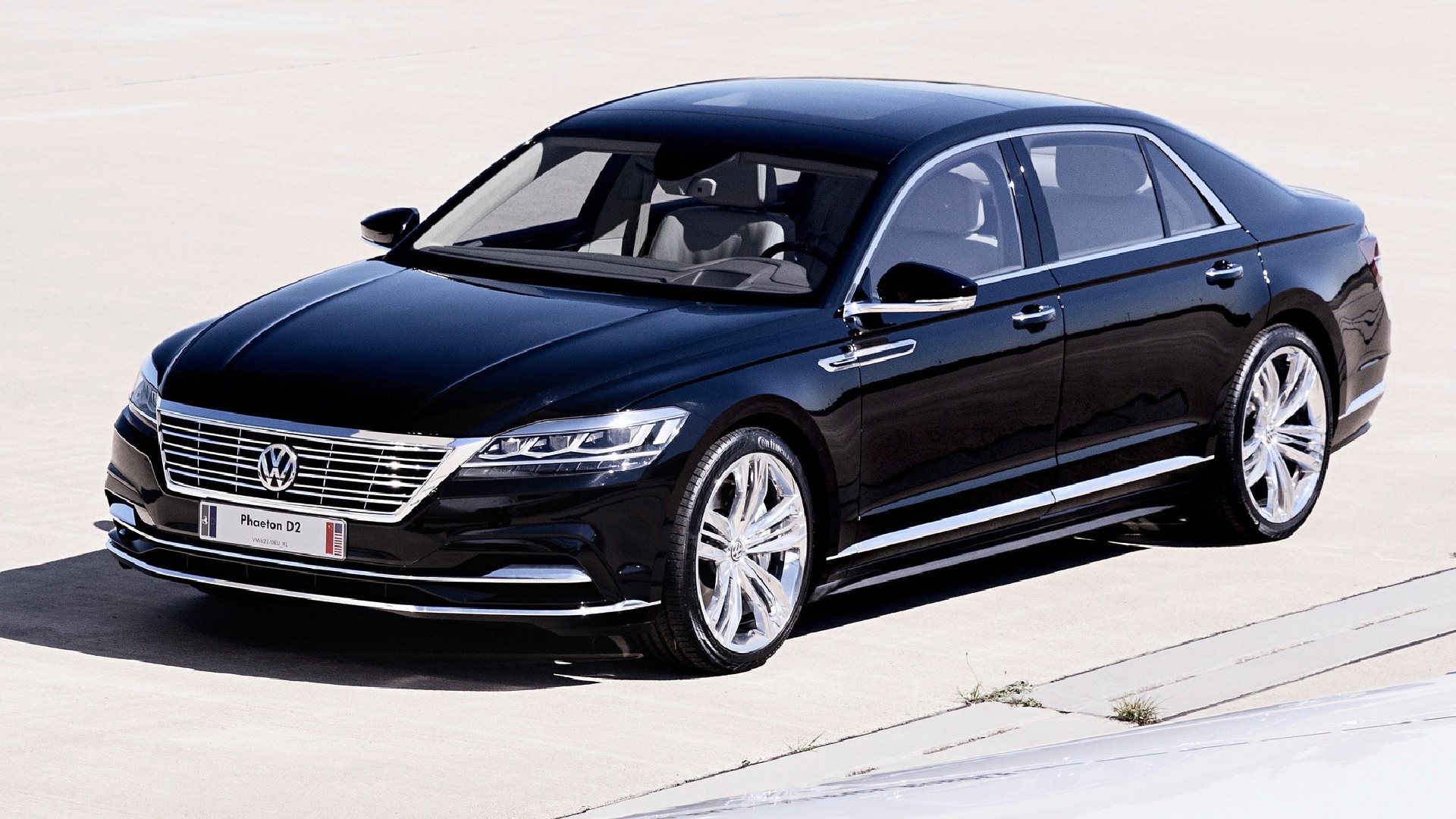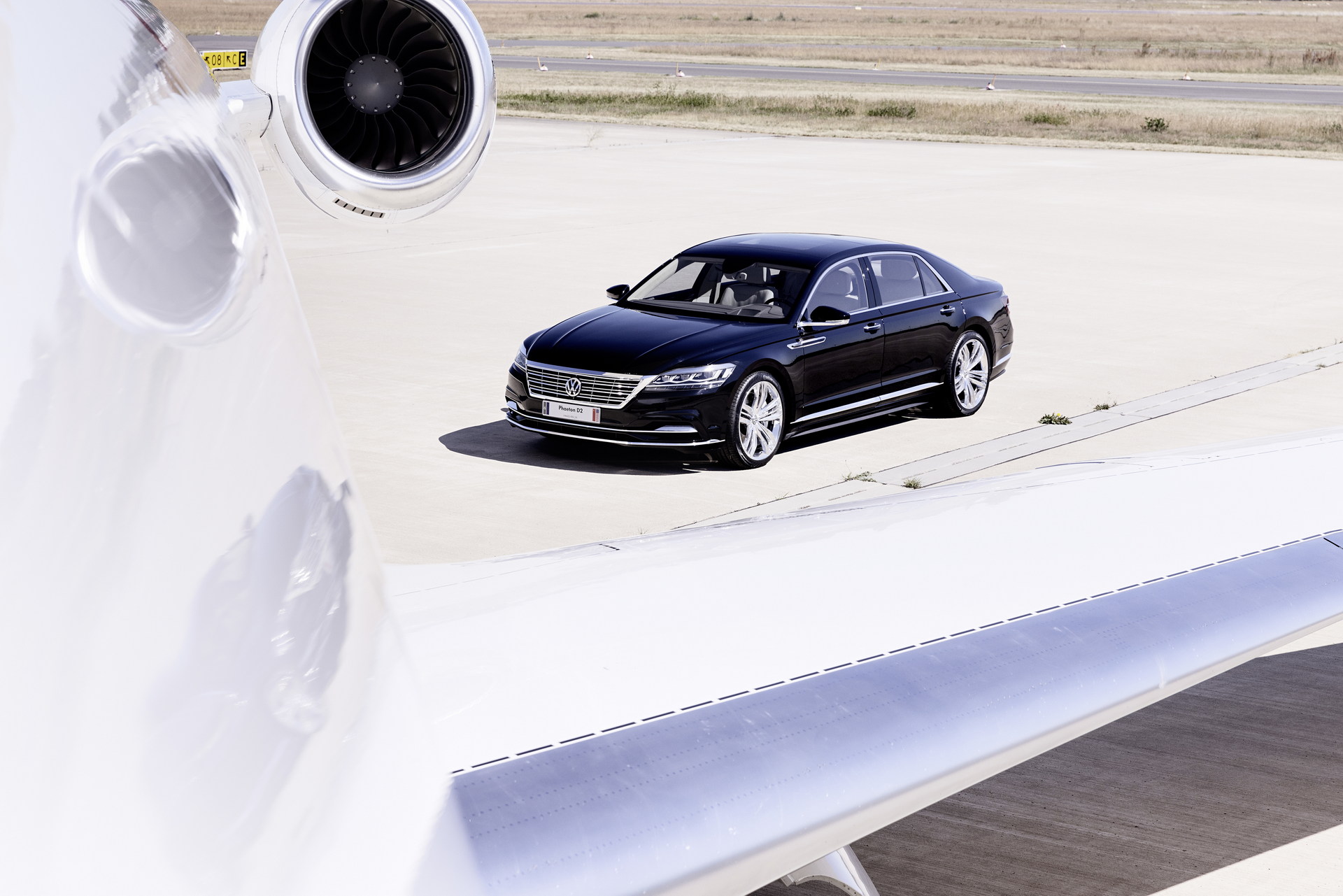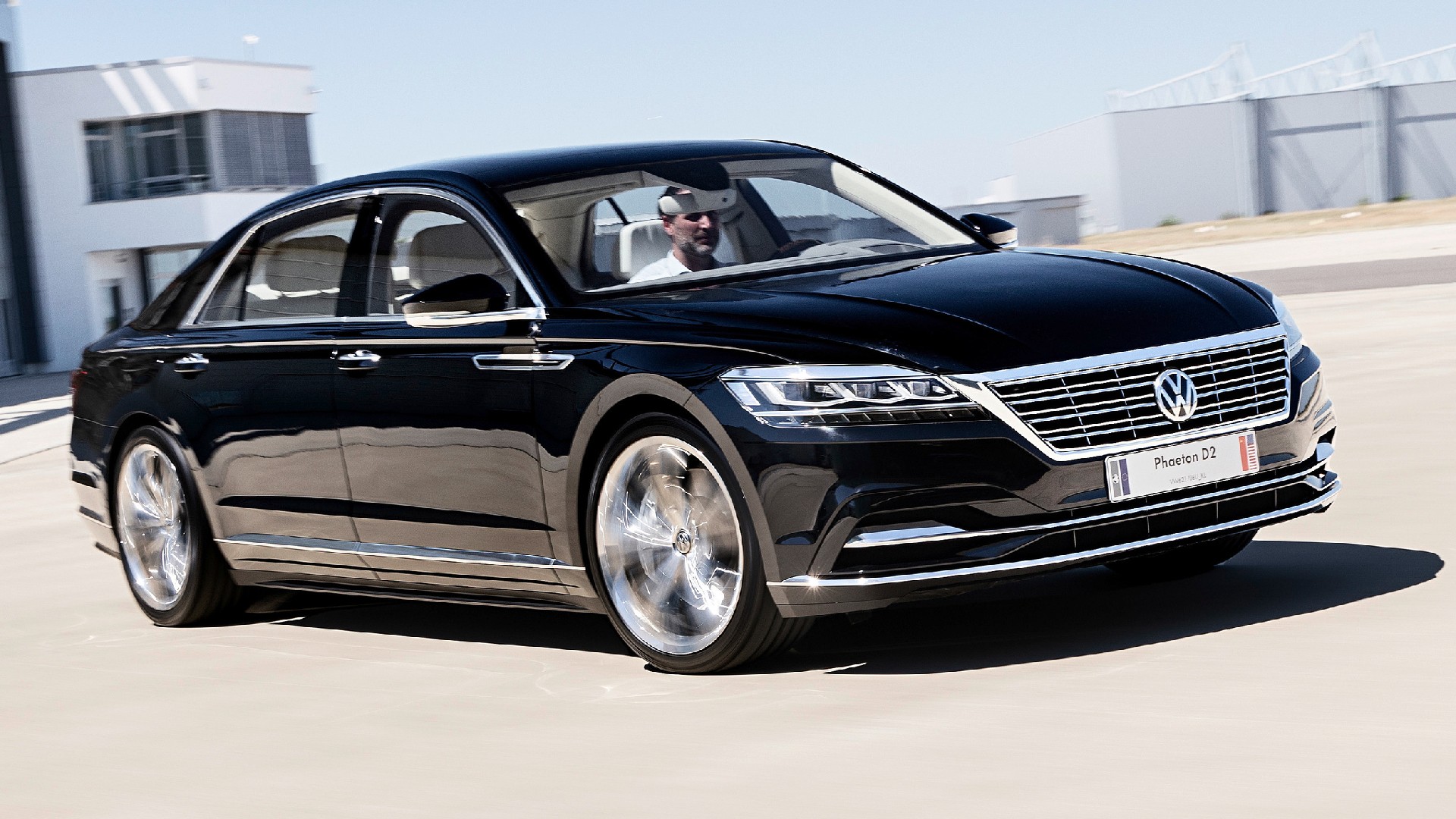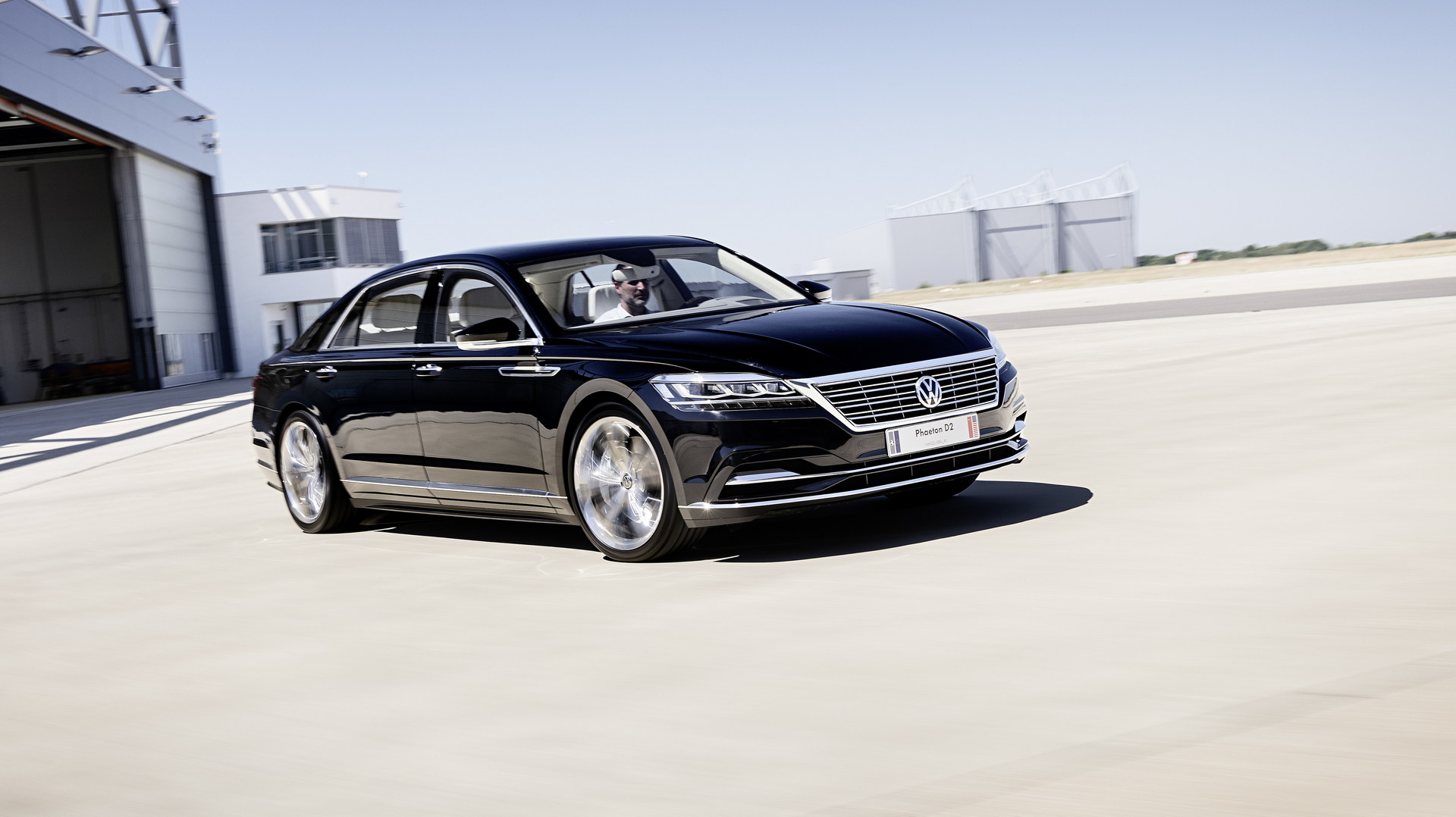The now-discontinued VW Phaeton is 20 years old and the company is celebrating the anniversary in style. Two decades after the launch of its flagship sedan, Volkswagen revealed a driveable prototype of the second generation Phaeton which never reached production, although it came pretty close.
Back in 2016, VW’s board decided to discontinue the Phaeton from the range, in favor of electrification. However, the development of the next generation was already well underway as proven by this “near-series prototype”. Back then, we kept reading reports about the new Phaeton, with high-ranked officials openly suggesting that the model would return – obviously prior to the final decision about axing the sedan.
Read Also: The Phaeton Was Volkswagen’s Doomed Venture Into The Premium Class
The fully functional model you see in the official photos came out of the shadowy garage of VW’s design office, showing us what could have been. Codenamed “Phaeton D2”, it was designed by Marco Pavone (head of exterior design), and Tomasz Bachorski (head of interior design), selected amongst four different proposals. The model appears to be slightly longer than the 5,060 mm (199.2 inches) of its predecessor, and closer to the 5,172 mm (203.6 inches) of the latest Audi A8.
Styling-wise it has traditional three-box proportions, and plenty of chrome accents contrasting the highly-reflective black paint. At the front, the grille is positioned lower, flanked by large headlights with rather complex LED graphics, plus conservatively interconnected bumper intakes. The low-slung profile has plenty of Audi A8 vibes in it, with a character line similar to the 2015 VW C Coupé GTE. At the back, VW played safe with familiar styling cues on the minimalist bumper, and a pair of LED taillights slightly reminiscent of the Audi A6.
More impressive is the interior of the Phaeton D2, with high-quality materials and high-tech features. The highlight is the curved display that was eventually introduced in the market in 2018 as the “Innovision Cockpit” of the VW Touareg. We can also see a digital instrument cluster, wood accents on the dashboard, doors, and steering wheel, white-colored leather, and a fancy pattern on the seat upholstery.
The Phaeton D2 was built on the MLB architecture which underpins numerous models in the VW Group including the Audi A8 and the VW Touareg. VW didn’t provide details about the powertrain, however, given the timing of the development, we are sure that plug-in hybrid variants were on the cards. Interestingly, another VW-badged sedan based on the MLB platform, the Phideon, was introduced in China in 2016 and remains on sale after receiving a facelift in 2020. However, this one is less premium-looking than the pictured prototype and definitely cheaper than an all-new Phaeton would be.
Jozef Kabaň, who is currently head of Volkswagen Design, said about the Phaeton D2: “The car still has a very attractive appearance and beautiful proportions, and it impresses with its tangible high quality and value”. As cool as it is to see a previously unreleased design, we have to admit that the prototype doesn’t match the road presence of the original, at least in our eyes.
A Money-Loosing Project That Was Doomed To Fail
The Phaeton was introduced in 2002, and received four updates / facelifts between 2007 and 2014 before being discontinued in 2016. It was produced in the Gläserne Manufaktur also known as the “transparent factory” in Dresden. The Phaeton was offered with a variety of engines, including the glorious W12, the unconventional V10 TDI, and the more mainstream V8, V6 and V6 TDI. Power was sent to either the front or to all four wheels through an automatic gearbox. Other features included the standard pneumatic suspension with adaptive damping, the aluminum body panels, the premium materials inside the cabin, and the high-tech equipment for 00’s standards.
Overall, the Phaeton was a money-losing project for Volkswagen, dictated by Ferdinand Piëch’s ambition of entering the luxury market. While sales never took off with the target group not being eager to drive a luxury sedan sharing its badge with a Polo, the automaker praises its discontinued flagship for paving the way for premium models like the Touareg and the Arteon.








